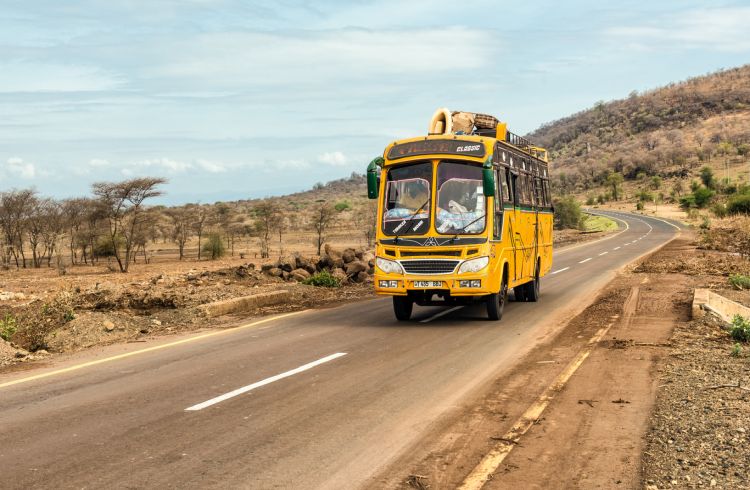In Tanzania, the bustling streets often witness an array of colorful buses that are a lifeline for daily commuters. The question of their reliability surfaces frequently, and it is a topic of considerable debate among locals and experts alike. With unforeseen elements like traffic congestion and road conditions playing a critical role, understanding their dependability is crucial.
Tanzanian buses have a mixed history, blending moments of exceptional service with periods of notable delays. A statistic to consider is that buses in urban areas like Dar es Salaam boast a punctuality rate of approximately 75%, which, though promising, leaves room for improvement. Advancements in technology, like real-time tracking systems, propose a potential solution to enhance this reliability further.

How reliable are Tanzanian buses?
Tanzanian buses are a critical part of daily life for many people, providing essential transportation for students, workers, and tourists. Despite their importance, the reliability of these buses can be inconsistent. Traffic congestion in major cities like Dar es Salaam often causes delays, affecting punctuality. Additionally, unpredictable road conditions contribute to these delays. For those relying on buses for daily commutes, this can be a significant challenge.
Several factors influence the reliability of Tanzanian buses. These include the maintenance of the vehicles, the skills of the drivers, and the efficiency of the routes. Despite these challenges, many bus companies strive to maintain regular schedules to the best of their abilities. The use of technology, such as GPS tracking systems, is being explored to monitor and improve bus punctuality. Implementing these systems could lead to more reliable service.
Travelers often experience varying levels of service quality depending on whether they are in urban or rural areas. Urban buses generally have better maintenance schedules and more frequent service. Conversely, rural bus services can be less predictable due to longer distances and poorer road conditions. This variability shows the need for improvements in the transportation infrastructure.
Feedback from commuters often highlights the need for better communication between bus operators and passengers. Some suggest that regular updates via mobile apps could help passengers plan their journeys more effectively. An added focus on customer service could drastically improve the overall experience. If bus companies invest in these areas, they could significantly enhance the reliability of their services.
Key Factors Affecting Bus Reliability in Tanzania
Several key factors impact the reliability of buses in Tanzania, with road conditions topping the list. Many roads, especially in rural areas, are unpaved and poorly maintained. This can lead to buses breaking down more frequently. Such issues not only cause delays but also require more frequent repairs. Consequently, maintaining a consistent schedule becomes challenging.
Another significant factor is the state of the buses themselves. Many buses in Tanzania are older models that may not be as reliable as newer ones. Proper maintenance is crucial for keeping these older vehicles on the road. However, it can be challenging for bus companies to invest in regular upkeep. This can lead to unexpected mechanical failures that disrupt service.
The skills and experience of bus drivers also contribute to reliability. Drivers need to navigate through traffic, manage tight schedules, and handle vehicle breakdowns. A well-trained driver is better equipped to deal with these challenges efficiently. Training programs for drivers can greatly improve service reliability.
Lastly, traffic congestion in urban areas is a major concern. It’s common for buses to get stuck in long traffic jams, leading to delays. Efforts to improve road infrastructure and introduce better traffic management systems can help mitigate this problem. Addressing these factors collectively can pave the way for a more reliable bus service.
Common Challenges Faced by Commuters
Commuters in Tanzania face a range of challenges that affect their daily journeys. One of the major issues is overcrowding on buses, especially during peak hours. Limited seating often forces passengers to stand for long periods. This can be uncomfortable and even unsafe. Additionally, overcrowding can lead to delays in boarding and disembarking.
Another common challenge is the inconsistent bus schedules. It’s not unusual for buses to run late or, at times, not show up at all. This unpredictability makes it hard for commuters to plan their trips efficiently. To address this, some bus companies are starting to implement real-time tracking systems. These systems can provide updates on bus locations and expected arrival times.
The cost of commuting is also a significant concern for many passengers. For some, the daily bus fare can be a substantial part of their income. While public transport is generally cheaper than private options, rising costs can still strain budgets. Affordable fare structures are essential to ensure that transportation remains accessible to all.
Safety is a crucial issue as well, with accidents being a frequent occurrence. Poor road conditions, reckless driving, and insufficient enforcement of traffic laws contribute to this problem. Ensuring safer travel requires better road infrastructure and stricter regulations. Commuters also benefit from awareness programs that promote safe travel practices.
Technological Advancements to Improve Reliability
Technological advancements are playing a crucial role in enhancing the reliability of Tanzanian buses. One significant development is the implementation of GPS tracking systems. These systems allow both bus operators and passengers to monitor bus locations in real-time. This can help in managing schedules more efficiently. It also provides passengers with accurate arrival times, reducing uncertainty.
Another technological innovation is the use of digital payment systems. Instead of relying on cash, passengers can use mobile payment apps to purchase tickets. This system speeds up the boarding process and reduces the risk of handling money. It also offers a layer of convenience for commuters. Moreover, it minimizes the chances of fare evasion.
Electronic boarding systems are also being introduced to improve the boarding and alighting process. These systems can scan tickets quickly and keep track of the number of passengers on board. They help in managing crowd levels and ensuring that buses do not exceed capacity. This contributes to a safer and more comfortable ride for everyone.
Additionally, many bus companies are now leveraging data analytics to optimize their operations. By analyzing data on route performance and passenger demand, they can make informed decisions. This might include adjusting routes, changing schedules, or maintaining buses more efficiently. These data-driven strategies can significantly enhance service reliability.
Infrastructure improvements, guided by technological insights, also contribute to better bus service. For instance, smarter traffic management systems can help reduce congestion. Intelligent traffic signals that adjust to real-time traffic conditions can improve flow. This helps buses stay on schedule and minimizes delays.
Overall, the integration of technology in public transportation systems holds great promise. It addresses various issues that impact reliability and enhances the overall commuter experience. For more details on how transportation is evolving in Tanzania, you can visit our website at Sia Yangu Safari.
Comparing Urban and Rural Bus Services in Tanzania
Urban bus services in Tanzania thrive in cities like Dar es Salaam and Arusha. These cities offer a higher frequency of buses and better-maintained vehicles. Additionally, urban areas benefit from more paved roads, reducing wear and tear on the buses. Traffic congestion, however, remains a significant issue. Urban centers often face delays due to heavy traffic.
Rural bus services face a different set of challenges. Roads in rural areas are often unpaved and poorly maintained, leading to frequent breakdowns. Bus services in these areas are less frequent, making travel planning more difficult. Additionally, the longer distances between stops can be hard on both vehicles and passengers. Despite these hurdles, rural buses provide essential connections to remote communities.
The following table highlights key differences between urban and rural bus services:
| Aspect | Urban Bus Services | Rural Bus Services |
|---|---|---|
| Frequency | High | Low |
| Road Conditions | Mostly Paved | Mostly Unpaved |
| Maintenance | Regular | Sporadic |
| Distance | Short | Long |
Technology adoption varies between these two settings as well. Urban buses are more likely to utilize modern systems such as GPS tracking and digital payments. In contrast, rural services may lag in implementing these technologies. This disparity can impact the quality and reliability of the bus services offered.
Efforts to improve both urban and rural bus services continue to evolve. Investments in infrastructure and technology hold promise for enhancing the overall commuter experience. Addressing the unique needs of both settings is key to creating a more reliable and efficient transportation network. This will ensure that all passengers, whether in urban or rural areas, can benefit from improved bus services.




